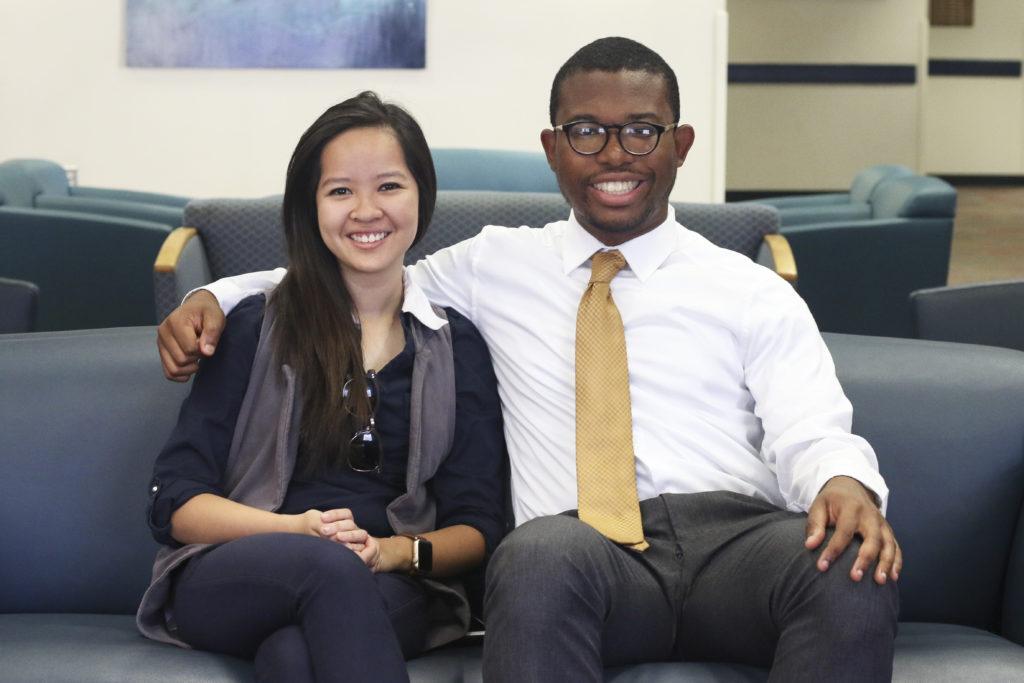Student Association leaders wrapped up the summer by checking off three goals: build strong relationships with officials, renovate the SA office and jump-start a new diversity and inclusion assembly.
After GW’s student affairs division and several other departments got a makeover, SA President Ashley Le said she concentrated on meeting the University’s newest staffers, including the new dean of the student experience and the athletic director, this summer. She said the summer meetings helped build trust with administrators, while she and her team also pursued two more concrete projects, including revamping the SA office and creating an application for the diversity assembly.
SA leaders said they used the summer to bring up new ideas to officials and garner feedback about some of the administration’s top priorities, like introducing a first-year course and reducing the cost of student rental space.
“We’re able to come to a happy middle ground,” Reed Elman Waxham, the senior adviser to the SA, said. “It has been mostly conversations this summer, but I think those conversations are where some of the most important work gets done.”
Le said she initiated discussions this summer with top-level administrators about the first-year course, which would include information for students about navigating the District, managing a budget and caring for mental health, among other topics. She said she and M.L. “Cissy” Petty, the dean of the student experience, will outline a plan during the fall for the program after visiting freshman residence halls to gather feedback about the course.
“This is a great opportunity for us to really look at the student experience from the day they first enter the University to the day they graduate and see how we can support all of that together,” she said.
Le added that both she and SA Executive Vice President Ojani Walthrust prioritized renovating the SA office on the fourth floor of the Marvin Center this summer – adding new furniture, fresh paint and a student resource center with tape, markers and staplers for public use. She said the new space allows students to access materials like free printers in the same area student groups locate their offices.
Over the past two weeks, Le said the SA has distributed brochures throughout residence halls advertising the new office and inviting students to stop by.
“When students are coming back, every student organization should be and will be able to use the printer and all the other services in preparation for welcome week or for everything else they have for the rest of the semester,” she said.
Walthrust said he has also been working on an application for a new diversity and inclusion assembly that will be released by the beginning of September. Le said the assembly – a group of student organization leaders representing different minority groups – will meet on the first Thursday of every month.
Imani Ross, a former SA senator and candidate for SA president, originally introduced the idea for the assembly in her platform this spring.
Walthust said he met with administrators like Michael Tapscott, the director of the Multicultural Student Services Center, to “make sure students are aware” of the diversity and inclusion assembly. He didn’t specify how Tapscott would promote the assembly.
Walthrust said in his platform for executive vice president that he’d also push officials to hire more people of color, which he said he discussed this summer with Caroline Laguerre-Brown, the vice provost for diversity, equity and community engagement.
“The foundation of a successful Student Association agenda is dependent on an understanding of what is important to the student body, how administrators view those issues and what the SA Senate is planning to work to prioritize this year,” Walthrust said in an email.
While this year’s SA leadership used the summer to establish relationships with administrators and lay the groundwork for a new assembly, previous SA leaders have used summer break to write reports or conduct behind-the-scenes research on major projects to bring to top administrators at the start of the fall semester.
Thomas Falcigno, a former SA executive vice president, spent the summer of his term two years ago asking officials to back projects like the first-year forgiveness policy. By the end of the summer, Falcigno had written a proposal to present to the Faculty Senate.
The policy, which allows students to retake a course from their first year if they receive a D+ or below, was implemented last academic year after garnering faculty support.
“If I had not used the summer to lay the groundwork for support, I doubt the project would have been completed by the end of my tenure,” Falcigno said in an email.
Former SA President and Executive Vice President Peak Sen Chua and Sydney Nelson said they used the summer to write proposals to officials for major projects like an academic resource center and sustainable investment fund.
“Without extensive learning from the summer, we would not have been eventually able to conceive and write proposals later in our terms,” Chua said in an email.
Chua and Nelson also used the summer to institute a textbook-sharing initiative for students in high-enrollment courses and reduce double-sided printing costs.
“We didn’t want to confine ourselves to just one or two projects,” Nelson said in an email. “We weren’t afraid to expand on our platforms from the election and really focus in on what it is that the student body needed from us.”





